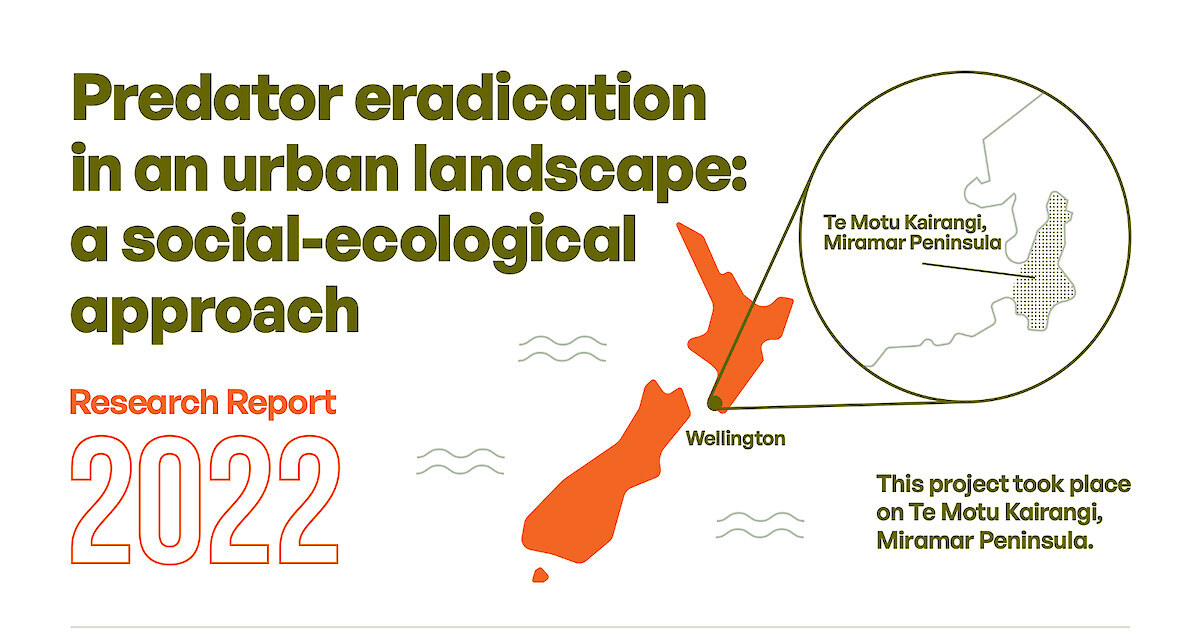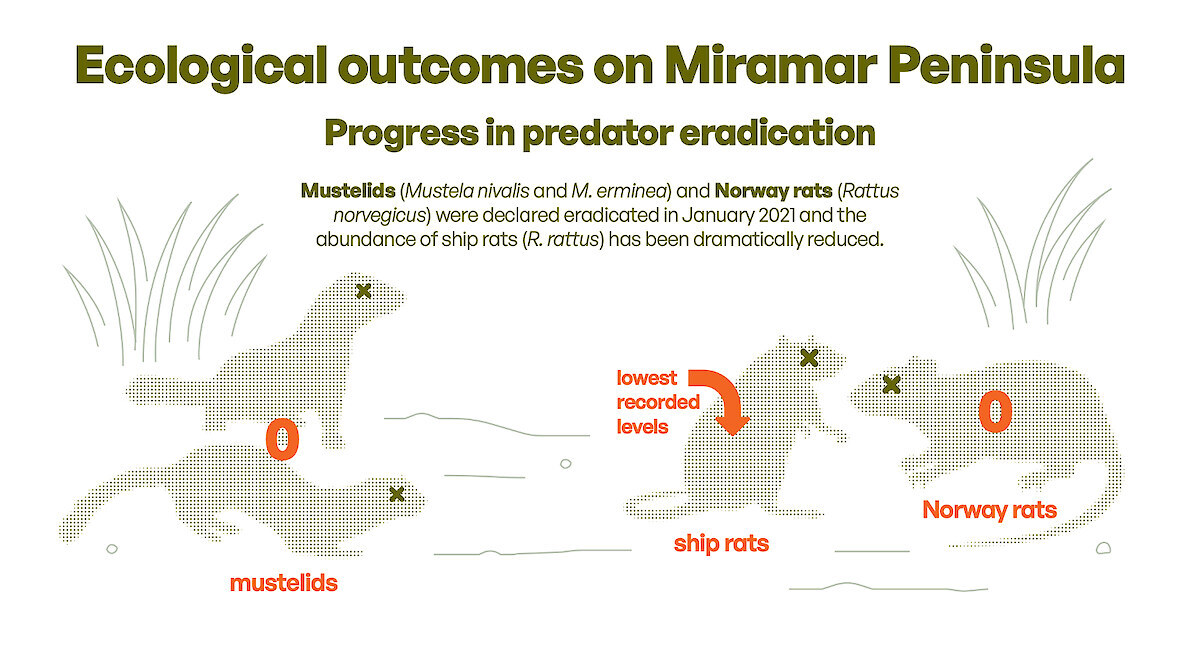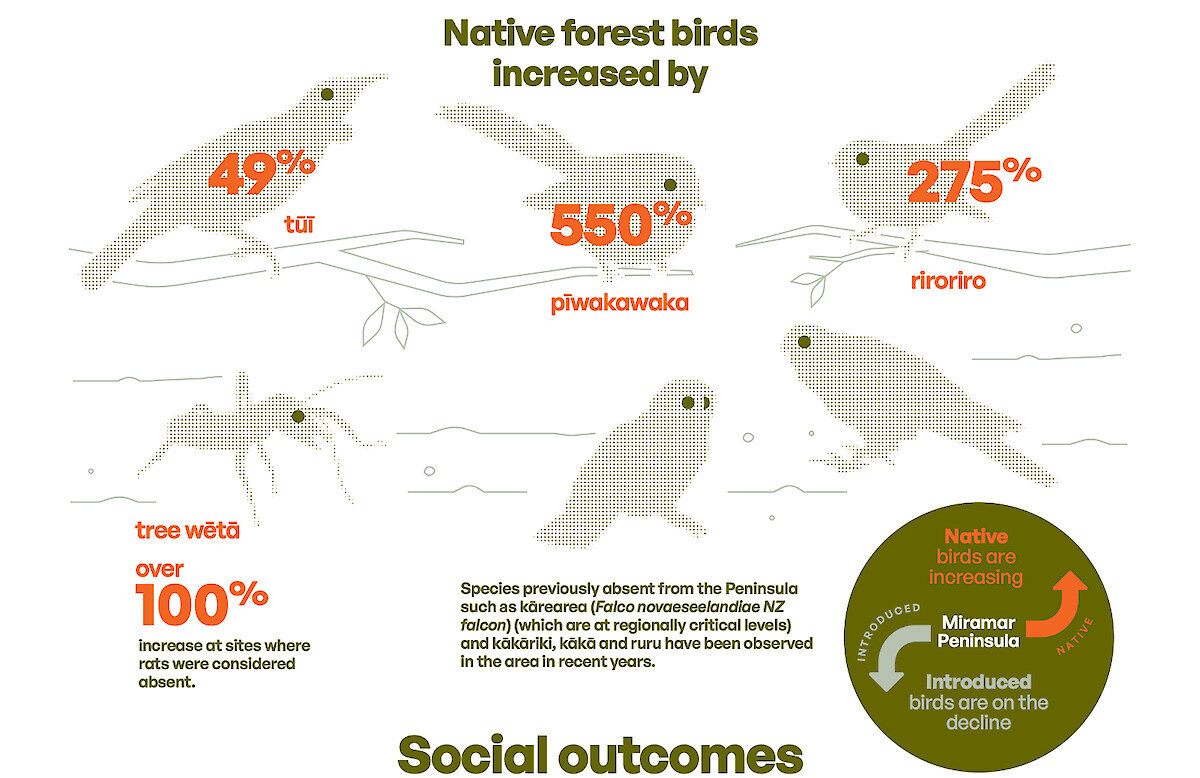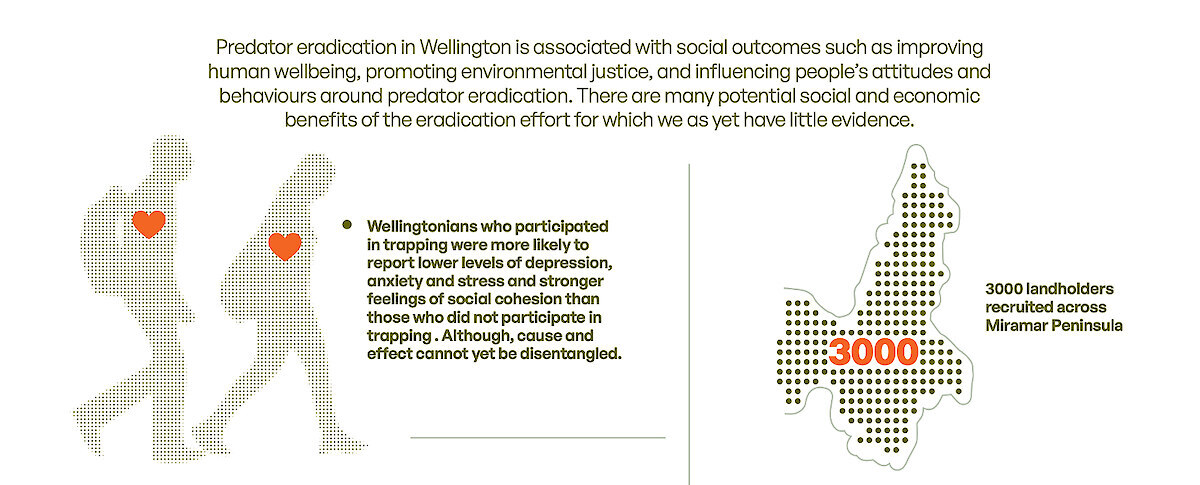Collective action to eradicate rats and mustelids from a large, peopled landscape: A social-ecological approach
This research report was conducted by Dr Julie Whitburn and Dr Danielle Shanahan of Zealandia Te Māra a Tāne, and is a collaboration with Predator Free Wellington Ltd and the Biological Heritage National Science Challenge.
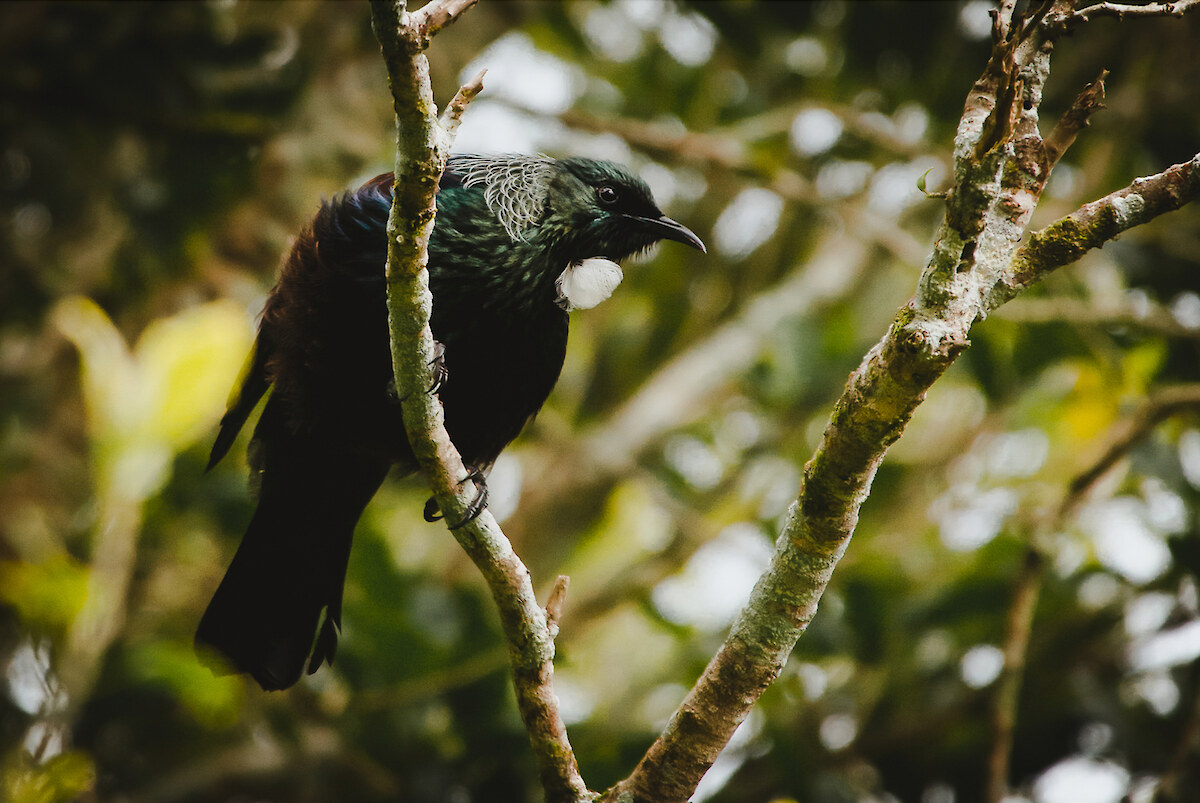
“This report outlines the social-ecological approach that [Predator Free Wellington] has taken for the eradication. [Predator Free Wellington’s] strategy had two interconnected arms – the technical plan and the community engagement plan.”
“A ‘remove and protect’ model was the basis for the technical plan (Bell, Nathan & Mulgan, 2019). This model requires the complete removal of predators from an area and then protecting that area against reinvasion, including establishing a virtual barrier. PFW had a general communication plan to build their presence in the community, a targeted strategy to engage community environmental groups as collaborative partners and a tailored engagement strategy to recruit landholders’ participation within each community.”
Released in 2022, the study sought to:
- Harness the social and ecological learnings of the Predator Free Wellington project, a pioneering eradication effort
- Examine the evidence of both social and ecological outcomes resulting from the project
Evidence for key ecological outcomes included:
- Introduced species are on the decline – Miramar is now at zero for Norway rats and mustelids
- Native species are increasing – species previously absent from the peninsula such as kārearea New Zealand falcon, which are at regionally critical levels, and kākāriki, kākā and ruru, have been observed in the area in recent years.
Evidence for key social outcomes included:
- People who participated in trapping were more likely to report lower levels of depression, anxiety and stress and stronger feelings of social cohesion than those who did not participate in trapping.
- Support for predator eradication in Wellington increased between 2017 and 2021.
- PFW achieved equitable deployment of traps and bait stations across the landscape irrespective of the socio-economic context or the amount of tree canopy cover in neighbourhoods.
The following infographic summarises these key findings from the research or you can read the full report here!
